Technical Brief: Promoting Synergies Between Climate Change Adaptation and Biodiversity
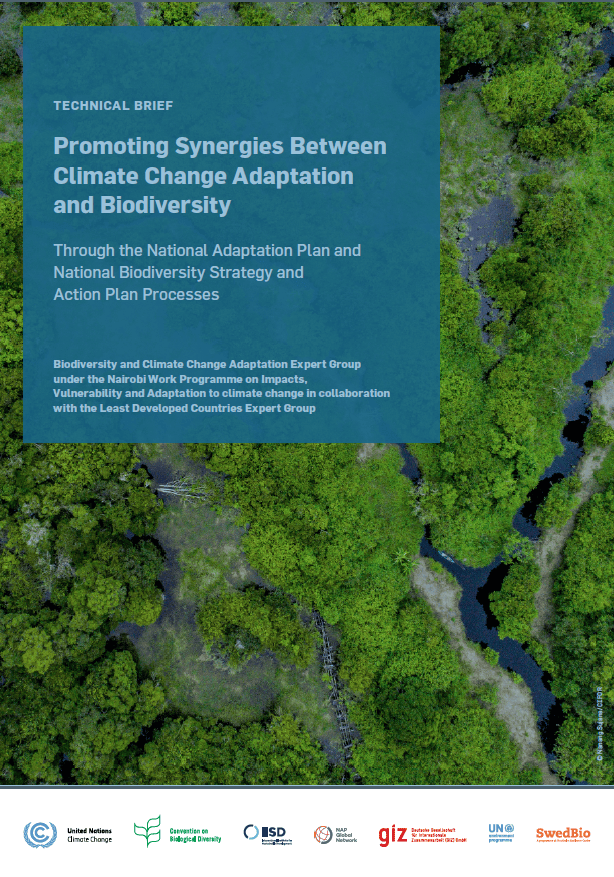
The technical summary presents a framework that highlights common elements in the adaptation and biodiversity planning process and provides insights into relevant case studies from different countries that illustrate key lessons learned and best practices. These could be applied or inspire the revision, formulation and implementation of the National Adaptation Plans (NAPs) and National Biodiversity Strategy and Action Plan Processes (NBSAPs), to promote synergies and efficient resource allocation.
Briefing: Impact Investing for Climate Change Adaptation, an Introduction
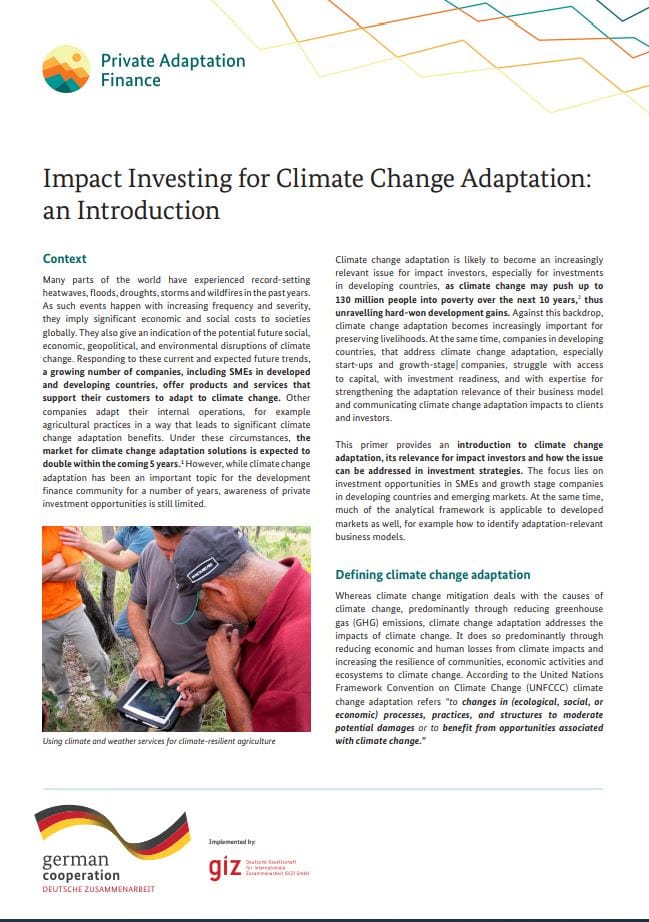
This Briefing provides an introduction to climate change adaptation, its relevance for impact investors and how the issue can be addressed in investment strategies. The focus lies on investment opportunities in SMEs and growth stage companies in developing countries and emerging markets. At the same time, much of the analytical framework is applicable to developed markets as well, for example how to identify adaptation-relevant business models.
PIEVC High Level Screening Guide: A guide to completing screening level climate change risk assessments using the PIEVC Process
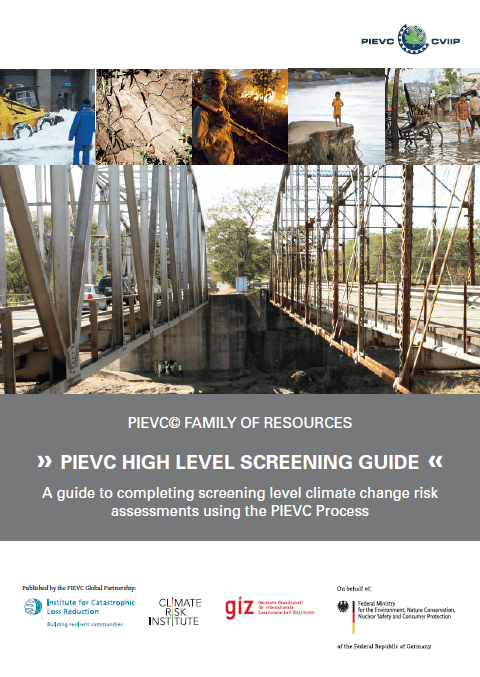
This PIEVC High Level Screening Guide (HLSG) is based on standard climate risk assessment
methods and is part of the PIEVC Family of Ressources. The PIEVC HLSG process is an approach
for undertaking vulnerability, risk, and resilience assessments. It is flexible enough to be applied to full assets or systems, to a single element of infrastructure, or to an entire portfolio of numerous assets.
PIEVC HLSG assessments result in the characterization and ranking of climate risk scenarios and the identification of those scenarios of highest priority for adaptation planning or more comprehensive
analysis.
PIEVC Large Portfolio Assessment Manual — A Guide for Prioritizing a Large Portfolio based on Climate Vulnerability
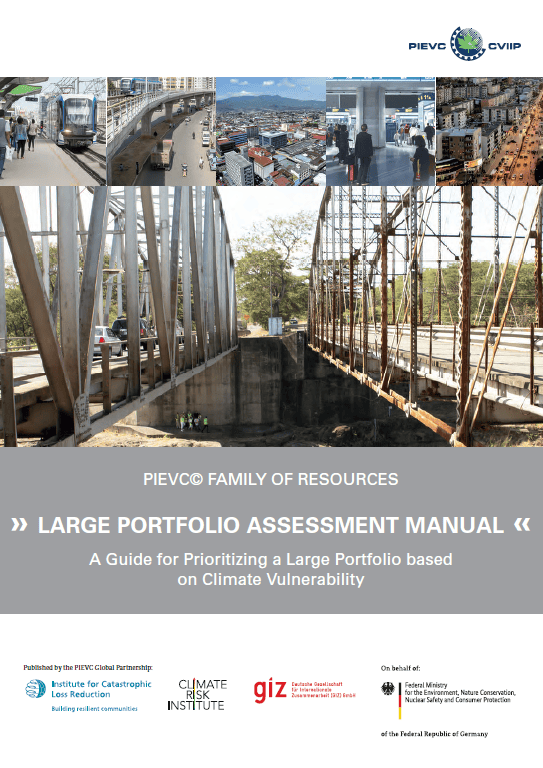
Part of the PIEVC Family of Resources, this manual provides guidance for infrastructure owners on how to use vulnerability and risk assessment to inform priority setting and managing climate resilience of a large portfolio of assets. It defines portfolio as a collection of infrastructre assets that are characterized by different climate vulnerabilities and risks.
PIEVC Catalogue — A Guide for Selecting Climate Risk Assessment Methods, Data, and Supporting Materials
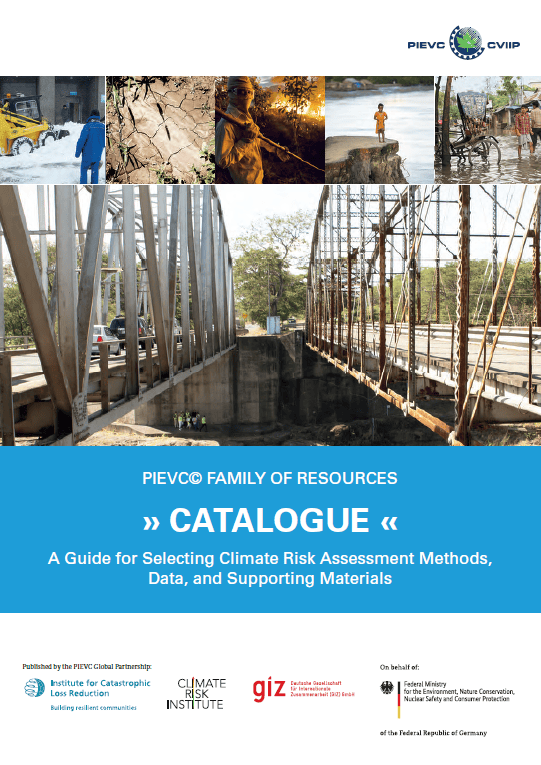
The PIEVC Catalogue is designed to help decision-makers navigate through the different considerations and options for assessing climate change risk and resiliency using the PIEVC Family of Resources. The catalogue guides the users through the objective-setting process and based on their objectives, helps them choose the optimum assessment paths and tools.
Synergies between adaptation, biodiversity, and mitigation: How Ecosystem-based Adaptation can build bridges between Nationally Determined Contributions and the new Global Biodiversity Framework
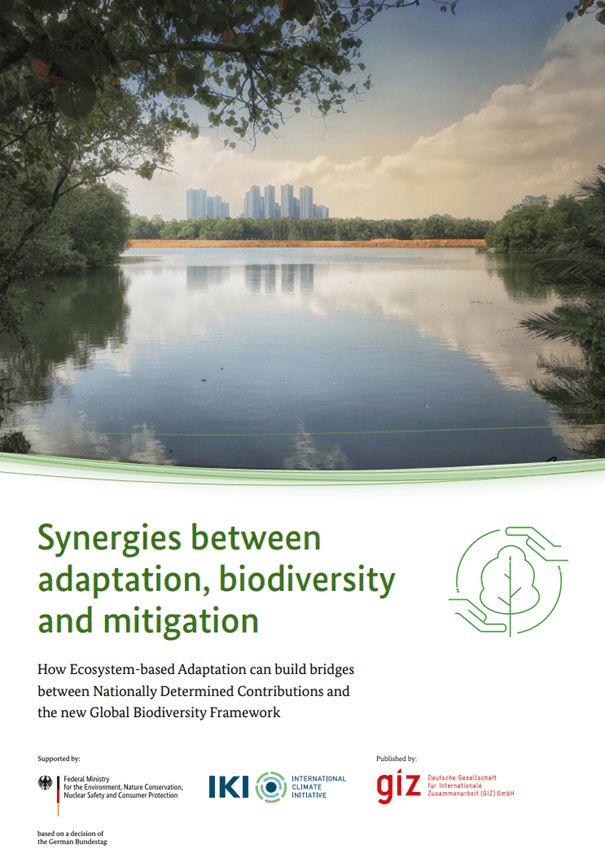
At the 15th Conference of the Parties (COP15) of the UN Convention on Biological Diversity held in December 2022, the new Global Biodiversity Framework (GBF) has been adopted. Based on these developments, the publication on synergies between adaptation, biodiversity and mitigation takes this new international reality into account. After some general considerations on the role of EbA in building bridges, the authors of the study apply this perspective to three cases (Pakistan, Jordan and Costa Rica), exploring synergies of ecosystem-based approaches in the water, agriculture and urban sectors.
Climate Risk Analysis for Identifying and Weighing Adaptation Strategies in Niger’s Agricultural Sector

The study focuses on evolving trends for temperature and precipitation, future water availability and the country’s suitability to grow crops under different climate change scenarios. The study’s projections go up to 2090, offering opportunities not only to look into short-term trends (2030), but also to take into account medium (2050) and long-term climate change impacts. In addition, the study undertakes a cost-benefit analysis of selected adaptation actions on which basis “business cases” for adaptation can be identified.
BALIK PROBINSYA: A phenomenological case study of pandemic-related reverse migration from Metro Manila to Leyte province, Philippines
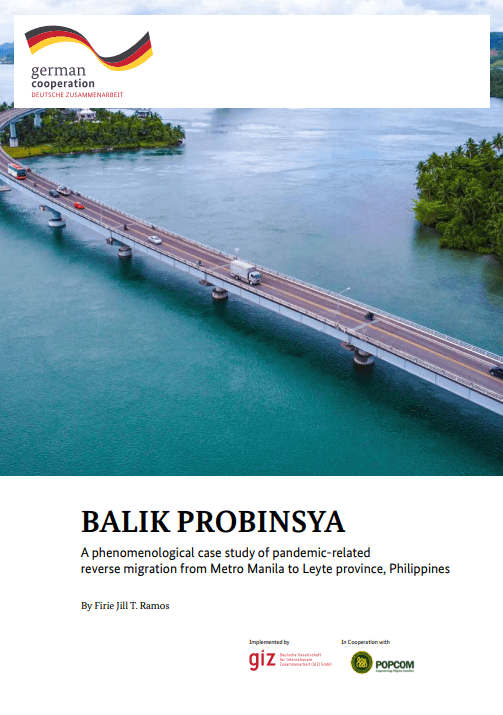
The Balik Probinsya program is a longterm program of the government intended for Metro Manila residents who want to return to their provinces “for good.” This paper is interested in determining the effects of this reverse migration on the rural areas and the loss of remittances from these returning migrants on the community of origin, especially any adaptation to climate change activities.
Climate Risk Analysis for Identifying and Weighing Adaptation Strategies in Burkina Faso’s Agricultural Sector
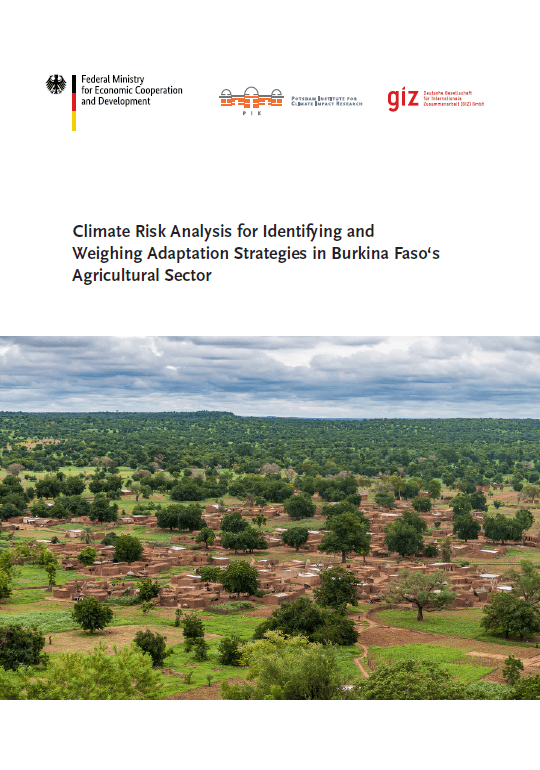
The study focuses on evolving trends for temperature and precipitation, future water availability and the country’s suitability to grow crops under different climate change scenarios. The study’s projections go up to 2090, offering opportunities not only to look into short-term trends (2030), but also to take into account medium (2050) and long-term climate change impacts. In addition, the study undertakes a cost-benefit analysis of selected adaptation actions on which basis “business cases” for adaptation can be identified.
A City in Motion – Migration, Climate Change, and Governance in Baguio City
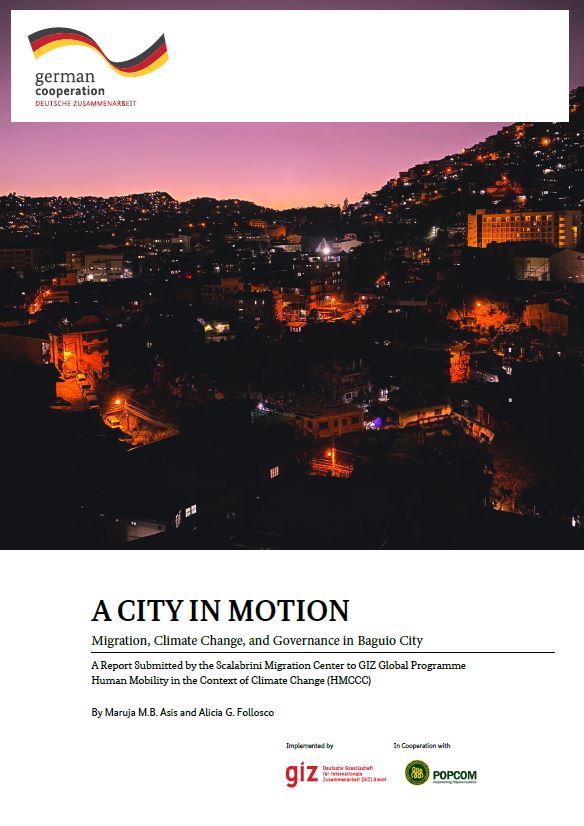
Baguio City is known for being a migration magnet as well as for having reached its ideal population size decades ago. This study attempted to examine and link three strands in Baguio City: migration, climate change (particularly slow onset events), and governance.
